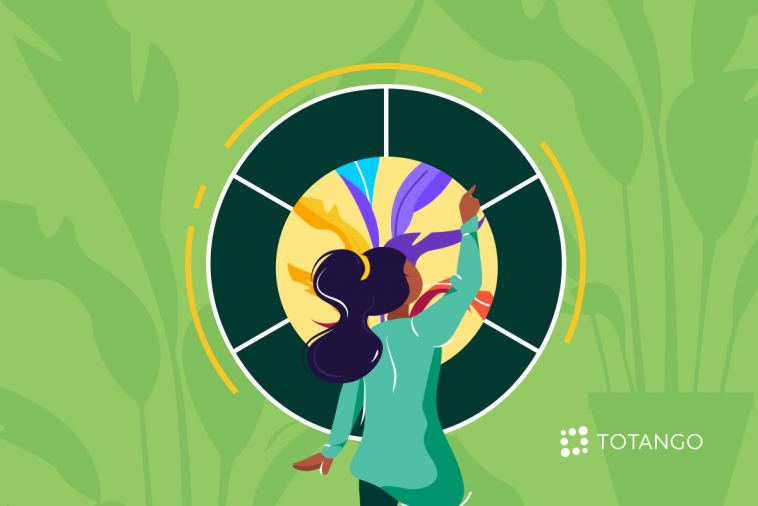- Like
- SHARE
- Digg
- Del
- Tumblr
- VKontakte
- Flattr
- Buffer
- Love This
- Save
- Odnoklassniki
- Meneame
- Blogger
- Amazon
- Yahoo Mail
- Gmail
- AOL
- Newsvine
- HackerNews
- Evernote
- MySpace
- Mail.ru
- Viadeo
- Line
- Comments
- Yummly
- SMS
- Viber
- Telegram
- JOIN
- Skype
- Facebook Messenger
- Kakao
- LiveJournal
- Yammer
- Edgar
- Fintel
- Mix
- Instapaper
- Copy Link
As the concept of the customer lifecycle has developed, understandings have changed under the influence of technology. If you search Google, you’re likely to find every other article giving a slightly different opinion. Some information is out-of-date, while some presentations give a partial perspective on the customer lifecycle. In this article, we’ll paint a full picture that incorporates the latest technology and provides actionable advice for optimizing each stage of the customer lifecycle.
What is a Customer Lifecycle?
The definition of the customer lifecycle has shifted from the perspective of the seller to that of the customer in the wake of technological advances. At one time, customer lifecycle models took a seller-centric perspective which split the pre-sales phase of the customer’s journey from the post-sales phase.
In today’s cloud-based environment, SaaS business models have increased awareness of how the pre-sales and post-sales phases form a unified experience from the customer’s perspective. A satisfying post-sales experience sets the stage for subscription renewals and referrals, laying a foundation for additional sales. In a SaaS environment, technology plays a key role in optimizing both pre-sales and post-sales experience so that customers are more disposed to renew subscriptions and promote referrals to new buyers.
In this holistic view, the unified customer lifecycle can be conceived as fluid, which includes a self-sustaining series of phases:
- Awareness: your prospect becomes aware of your brand and value proposition
- Conversion: persuaded by your value proposition, your prospect makes their first purchase and becomes a paying customer
- Onboarding: your new customer takes their first steps towards becoming an active user deriving practical value from your SaaS product
- Nurturing: your customer actively adopts your SaaS product into their regular workflow, increasing the value they derive from their initial purchase
- Renewal: your customer decides to renew their subscription or license so they can continue deriving value from your product
- Expansion: your customer expands the value they derive from your brand by adopting advanced features and purchasing new products
If all goes well, this cycle perpetuates itself as your customer becomes a repeat buyer and promotes your brand to other buyers. However, a poor user experience at any stage can cause the customer to end their relationship with your brand, ending the customer lifecycle.
Customer Journey Versus Customer Lifecycle: What’s the Difference?
Before we go on, let’s pause to clarify some terminology you may have encountered. You may sometimes hear the phrase “customer journey” used in the same context we’re using to discuss customer lifecycle. These are really just two metaphors for talking about the stages in your customer’s relationship with you. One visualizes these stages as steps as directed towards a goal, while the other pictures them on analogy with stages in the lifespan of a living, growing organism. Apart from that nuance in meaning, there isn’t a substantial difference between these phrases, and they’re often used interchangeably.
Now that we have an idea of what the customer lifecycle is, let’s take a closer look at each of its stages and how best practices combined with technology can help optimize the customer experience in each stage.
Awareness
In the awareness stage, your marketing campaigns raise prospects’ consciousness of your brand, inviting them to visit your website.
Tactical goals:
- Making prospects aware of your brand and value proposition
- Generating web traffic
- Capturing contact information for follow-up marketing
Quick advice:
- Position your brand with a unique selling proposition that showcases the value you offer
- Build a reputation as a thought leader by sharing content that meets your audience’s needs
- Invite prospects to follow you on social media and visit your website
- Include an opt-in form where visitors can join your email list
Resources:
The Customer Journey Map: An Ultimate Guide
Conversion
The conversion stage unfolds as visitors to your website travel through your sales process to the point where they’re ready for their first purchase. In most cases, this requires more than one marketing touch, so a purchase often occurs after a prospect has followed you on social media, made multiple visits to your site and joined your email list. Offering a free trial of your SaaS product can play a key role in persuading customers to make their first purchase.
Tactical goals:
- Making multiple marketing touches
- Persuading visitors to become free trial users
- Providing value to visitors and free trial users to steer them towards a sale
Quick advice:
- In this stage and the prior stage, strive to provide content that solves prospects’ needs and educates them about the value you offer
- Steer traffic towards free trial offers, demo pages, and other opportunities for prospects to experience your product without risk
Resources:
What Makes a Free Trial Work (Or Not)
Onboarding
The onboarding stage marks the transition from the pre-sales to the post-sales phase of your customer’s lifecycle. In this stage, the customer gets set up with your SaaS product so they can begin using it. Their experience in this stage plays a significant role in their decision to continue using your product and buying from your brand.
Tactical goals:
- Guide your customer through the onboarding process as smoothly as possible
- Proactively assist customers who are having difficulty completing onboarding steps
- Establish a relationship between your customer and their account manager
Quick advice:
- Set up standardized procedures to optimize the onboarding process
- Use automation to implement best practices and assist struggling customers
- Track onboarding rates and the onboarding progress of individual customers to make sure your onboarding process is easy and can be completed quickly
Resources:
Guide to Successful Customer Onboarding
7 Customer Onboarding Best Practices
Nurturing
In the nurturing phase, also called the adoption phase, customers who have successfully onboarded become active users of your product. Usage increases as the customer learns more about how to use your product and how to apply it to meet their needs.
Tactical goals:
- Educating customers how to use your product
- Sharing practical tips about applications of your product
- Providing support to customers who have questions or challenges
Quick advice:
- Develop and share content which helps customers through their learning curve with your product
- Track customer service KPIs such as response time and first contact resolution rates to make sure your support procedures are effective
Resources:
Best Practices on Driving High Product Adoption
What To Do About Low User Adoption
Renewal
The renewal stage includes the steps immediately leading up to your customer’s decision whether or not to renew their subscription or license. Many customers make their decision months before their current subscription expires, so actions you take early in the process can have a major impact.
Tactical goals:
- Remind customers that it’s time to renew
- Remind customers of the value they’ve received from your product. You can do this through Totango’s SuccessBeat Campaign feature and share these wins on a continuous basis.
- Extend customers a compelling renewal offer
Quick advice:
- Strive to provide stellar service in prior phases so that customers are predisposed to renew
- Track customer satisfaction and reach out to customers who are at risk of churn
- Schedule multiple automated renewal reminder notifications
- Make your renewal process as easy as possible
- Offer automatic renewal options
Resources:
How to Improve Customer Retention—Even During a Pandemic
Expansion
In the expansion phase, customers’ usage of their original purchase leads to advanced feature adoption and the purchase of new products and services. This can lead them to become promoters of your brand who refer you to new prospects and customers.
Tactical goals:
- Get customers to adopt advanced product features which increase their awareness of additional value your brand offers
- Extend customers cross-sell and upsell offers
- Provide opportunities and incentives for customers to promote your brand
Quick advice:
- Provide educational content and support which encourages advanced feature adoption
- Use in-app messages, email and phone surveys to extend cross-sell and upsell offers
- Track Net Promoter Score to measure customer sentiment
- Offer top promoters incentives for referrals
Resources:
Farm Don’t Hunt: The Definitive Guide to Customer Success
Understanding Your Customer Lifetime Value (CLV)
A well-managed customer lifecycle directly affects your revenue by increasing your customer lifetime value. CLV represents the average amount each customer you acquire spends over the course of their relationship with you. When a customer experiences a smooth journey at each stage of their lifecycle, they become more likely to become repeat buyers. They also become valuable promoters of your business, increasing the cost-efficiency of your marketing. This makes taking steps to improve customer lifecycle management a prudent investment.
Bringing The Customer Lifecycle Together
Totango’s Spark customer success platform brings your customer lifecycle together by leveraging automation to optimize each step in your customer’s journey. Spark implements the concept of customer success playbooks which map out specific SuccessPlay procedures you will use at each step in the customer lifecycle to help customers achieve their goals and enjoy a satisfying experience. You can implement SuccessPlays through SuccessBLOCs, modular add-ons which provide everything you need to immediately optimize the customer experience at any stage in their lifecycle, including SuccessPlay best practices, KPIs, and analytics tools which make it easy to monitor the effectiveness of your customer lifecycle management efforts. You can install SuccessBLOCs for any stage of the customer lifecycle, from promoting freemium customers into buyers to encouraging renewals, upsells and referrals.
Optimize Your Customer Lifecycle to Maximize Customer Lifetime Value
Your customer lifecycle consists of the stages your customers travel through over the course of their journey from prospects to customers to repeat buyers. The way the customer lifecycle has been conceptualized has changed under the influence of SaaS business models, which place more emphasis on the continuity between pre-sales and post-sales experience of your brand and the need to deliver a consistently satisfying experience throughout the lifecycle. Best practices implemented by technology can help ensure effective customer lifecycle management characterized by high satisfaction.
Totango’s Spark platform provides all the tools needed to automate the delivery of customer success and satisfaction at each stage in the customer lifecycle. If you’d like to see how Spark can help you improve customer lifecycle management try it free to experience for yourself how effortless delivering customer success can be.



